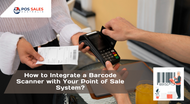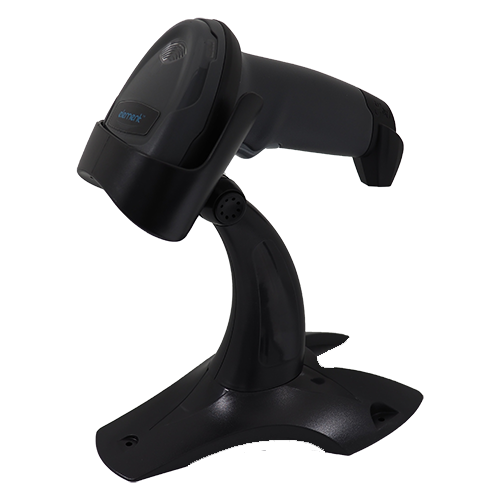How to Integrate a Barcode Scanner with Your Point of Sale System?
The adoption of a barcoding system holds immense significance in enhancing business efficiency across various industries. At its core, barcoding simplifies and accelerates data entry processes, revolutionising inventory management, sales transactions, and overall operational workflows. By assigning a unique identifier to each product through a barcode, businesses can eliminate manual data entry errors, ensuring the accuracy of information in their systems. This precision extends to inventory control, where real-time tracking becomes seamless, reducing instances of overstocking or stockouts. Moreover, the integration of barcodes with point of sale (POS) systems expedites the checkout process, resulting in shorter queues and increased customer satisfaction. The automated data capture facilitated by barcoding not only minimises human error but also enhances the overall speed of operations, contributing significantly to the efficiency and competitiveness of modern businesses. As technology continues to advance, the barcoding system remains a cornerstone in optimising business processes, fostering accuracy, and ultimately improving the bottom line.
In this blog, we'll explore-
- The benefits of integrating a barcode scanner with your POS system and
- Provide a step-by-step guide on how to integrate your barcode scanner with your POS system.
Let’s start by discussing-
Barcode Scanner and Its Popular Types
A barcode scanner, also known as a barcode reader or scanner, is a device designed to capture and interpret data encoded in barcodes. Barcodes are graphical representations of data that consist of parallel lines and spaces of varying widths. These codes are typically printed on product packaging, labels, or documents and serve as a unique identifier for the associated item. The barcode scanner uses optical or laser technology to read the information contained in the barcode and translates it into a digital format that can be processed by a computer or other electronic systems.
There are several types of barcode scanners, each with its own technology and applications.
Here are some popular types:
- Laser Barcode Scanners: Laser scanners use a laser beam to read barcodes. They are known for their fast and accurate scanning capabilities. These scanners are commonly used in retail environments and can read barcodes from a moderate distance.
- CCD (Charge-Coupled Device) Barcode Scanners: CCD scanners use an array of LED light sensors to capture and interpret barcode data. They are particularly effective for reading 1D barcodes and are commonly used in environments with limited light.
- 2D Imagers: 2D imagers can read both 1D and 2D barcodes. They use image sensors to capture a picture of the barcode, allowing them to read more complex 2D barcodes, such as QR Code Scanners. These scanners are versatile and find applications in various industries.
- Pen-type Barcode Scanners: Pen-type scanners, also known as wand scanners, require the user to physically swipe the scanner across the barcode. They are simple and cost-effective but may be slower compared to other types.
- Camera-Based Barcode Scanners: These scanners use a built-in camera to capture images of barcodes. They are often integrated into smartphones and tablets, turning the device into a mobile barcode scanner. This type is commonly used in mobile applications and inventory management.
- Omni-Directional Barcode Scanners: Omni-directional scanners use multiple scanning lines and mirrors to read barcodes from any direction. They are commonly used in retail environments where items need to be quickly scanned from different angles.
- Fixed-Mount Barcode Scanners: Fixed-mount scanners are installed in a specific location, such as a conveyor belt or production line, and automatically scan passing items. They are efficient for high-volume and automated scanning applications.
Benefits of Integrating a Barcode Scanner with Your POS System
Integrating a barcode scanner with your Point of Sale (POS) system can bring a multitude of benefits to your business, streamlining operations and enhancing overall efficiency.
Here's a detailed look at the advantages:
- Speed and Accuracy: One of the primary benefits is the significant improvement in the speed and accuracy of transactions. Barcode scanners eliminate the need for manual entry of product codes, reducing the likelihood of errors and ensuring a faster checkout process. This leads to shorter lines at the register and a more positive customer experience.
- Efficient Inventory Management: Barcode scanners facilitate real-time tracking of inventory levels. As products are scanned during sales transactions, the POS system automatically updates the inventory database. This real-time information helps in preventing stockouts and overstock situations, allowing for better inventory control.
- Reduced Errors: Manual data entry is prone to errors, and these errors can lead to discrepancies in pricing, inventory levels, and other critical data. Barcode scanners, by virtue of their automated data capture, significantly reduce the chances of human error, ensuring the accuracy of information throughout the system.
- Enhanced Customer Experience: The speed and accuracy of transactions made possible by barcode scanners contribute to an improved customer experience. Customers appreciate a swift and error-free checkout process, which can positively impact their perception of your business and increase loyalty.
- Streamlined Employee Training: Training employees to use a barcode scanner is generally quicker and simpler than training them for manual data entry. This not only reduces training time but also minimises the learning curve for new staff, allowing them to become proficient in POS operations more rapidly.
- Data Analysis and Reporting: Integrated barcode scanners provide detailed transaction data that can be utilised for robust reporting and analysis. Businesses can gain insights into sales trends, popular products, and customer purchasing behaviour. This data-driven approach empowers strategic decision-making and helps in shaping future business strategies.
- Compatibility with Other Systems: Barcode scanners can seamlessly integrate with other business systems, such as inventory management, accounting, and customer relationship management (CRM) software. This integration ensures that data flows smoothly across various departments, reducing the need for manual data entry in multiple systems.
- Versatility with Various Barcode Types: Barcode scanners can be designed to read different types of barcodes, including 1D and 2D barcodes. This versatility allows businesses to adapt to changing industry standards and accommodate various product labelling requirements.
- Time and Cost Savings: The automation brought about by barcode scanners translates into time savings for both employees and customers. In the long run, this efficiency leads to cost savings by reducing labour costs associated with manual data entry and minimising errors that can result in financial discrepancies.
How to Integrate your Barcode Scanner with Your POS system?
Integrating a barcode scanner with your Point of Sale (POS) system is a crucial step toward streamlining your business operations.
Step 1: Identify Compatible Hardware
- Select a Suitable Barcode Scanner: Choose a barcode scanner that is compatible with your POS system. Consider factors such as the type of barcodes used (1D or 2D), scanning distance, and connectivity options (USB, Bluetooth, etc.).
- Ensure Compatible POS Hardware: Confirm that your POS terminal or computer supports the chosen barcode scanner. Check for available ports (USB, serial, etc.) and ensure that the hardware specifications align with the scanner requirements.
Step 2: Connect the Barcode Scanner
- Physical Connection: Connect the barcode scanner to your POS hardware using the appropriate cable (USB, serial, etc.). If the scanner is wireless, follow the manufacturer's instructions to establish a reliable connection.
- Power On and Verify Connection: Power on the barcode scanner and verify that it is properly connected to your POS hardware. Many scanners have indicator lights or beeps to signal a successful connection.
Step 3: Configure Scanner Settings
- Access Scanner Settings: Use the manufacturer's instructions to access the settings menu on your barcode scanner. This is typically done by scanning specific configuration barcodes provided in the scanner's manual.
- Adjust Configuration Parameters: Configure the scanner settings according to your POS system requirements. This may include adjusting scanning speed, enabling specific barcode types, or adding prefixes and suffixes for data formatting.
Step 4: Install Necessary Software
- Driver Installation: Some barcode scanners may require drivers or software to be installed on your POS hardware. Check the manufacturer's documentation for any required installations and follow the provided instructions.
Step 5: POS System Integration
- Check POS System Compatibility: Confirm that your POS system supports the integration of barcode scanners. Most modern POS systems are designed to work seamlessly with barcode scanners.
- Install Necessary Plugins or Extensions: Depending on your POS system, you may need to install specific plugins or extensions to enable barcode scanner functionality. Refer to your POS system's user manual or support resources for guidance.
Step 6: Test the Integrated System
- Scan Test Barcodes: Perform thorough testing by scanning various barcodes to ensure the system accurately reads and processes the information. Test different types of barcodes, orientations, and distances to identify any potential issues.
- Verify Data Transmission: Confirm that scanned data is transmitted correctly to your POS system. Check for accurate product identification, pricing, and inventory updates.
Step 7: Train Staff
- Provide Staff Training: Train your staff on how to use the integrated barcode scanner. Familiarise them with the scanning process, correct procedures for handling different products, and any specific functions or features associated with the barcode scanner.
Step 8: Monitor and Maintain
- Regular Performance Monitoring: Regularly monitor the performance of the integrated system. Pay attention to scanning accuracy, system responsiveness, and any error messages.
- Address Issues Promptly: If any issues arise, address them promptly to minimise disruptions to daily operations. Troubleshoot and resolve problems or seek assistance from the scanner or POS system manufacturer.
Step 9: Update Software and Firmware
- Stay Informed About Updates: Keep track of updates for both your POS software and the barcode scanner firmware. Regularly update the software to benefit from the latest features, security patches, and improvements.
Wrapping Up,
Integrating a barcode scanner with your POS system is a strategic move to enhance the efficiency of your retail operations. By choosing the right hardware, configuring settings, and ensuring seamless integration, you'll be on your way to a faster, more accurate, and customer-friendly checkout experience. Embrace the power of barcode technology to propel your business forward in the competitive world of retail.
For personalised assistance on integrating your barcode scanner with your POS system, get in touch with an expert at POS Sales Australia today.
That said, if you are planning to buy your barcode scanners online, look no further! POS Sales Australia is the perfect shopping destination for you. We are a leading online reseller of premium POS Machine, hardware, consumables, accessories, and bundles, all available at competitive prices. Browse through our inventory of premium POS Systems in Sydney and shop for the perfect device to meet your business needs.
For more information, Contact us or call our POS expert @ 1300 026 062


